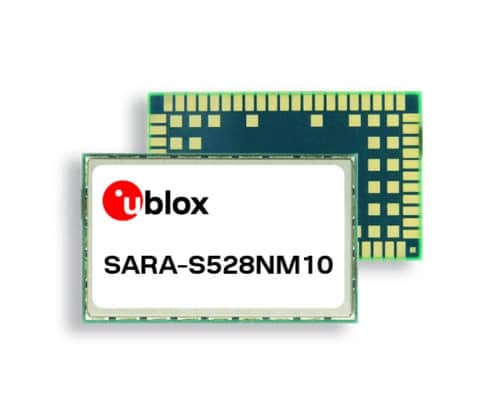The module combines terrestrial and satellite networks for global IoT coverage, asset tracking, and efficient power use.

Recently, u-blox has launched the SARA-S528NM10, a module compliant with both terrestrial and non-terrestrial network standards for the Internet of Things (IoT). This module enables global coverage with accurate, low-power positioning, useful for continuous asset tracking and monitoring. It also serves in telematics, industrial control, metering, utilities, and fleet management.
Despite cellular networks covering only a small portion of the world, there is an increasing demand for connectivity, particularly for tracking assets in remote areas. Satellite IoT meets this need, but high costs and power requirements of satellite terminals have limited its adoption.
Traditional satellite connectivity relies on proprietary hardware and software, which limits users to specific satellite operators. The u-blox module, however, is based on global 3GPP standards, allowing for interoperability with multiple satellite providers, thus offering more flexibility for users.
The module is compatible with the three new NTN bands—n23 (United States), n255 (L-band global), and n256 (S-band Europe), thereby enhancing its technological foundation and securing its future applicability. It maintains pin compatibility with other u-blox SARA series cellular-only modules, allowing engineers to upgrade their IoT products using existing designs without expensive overhauls.
“The new u-blox satellite IoT-NTN cellular module is designed to maintain connectivity in areas without cellular coverage,” explained Stephan Zizala, u-blox CEO. “The integrated u-blox GNSS solution consumes less than 15mW of power in continuous tracking mode and has high RF sensitivity that reduces the time required to establish a position fix. It provides concurrent location data without interrupting the cellular or satellite connection, which further helps to minimize power consumption due to the shortened active time of the device.”






